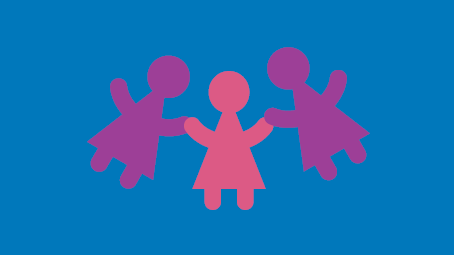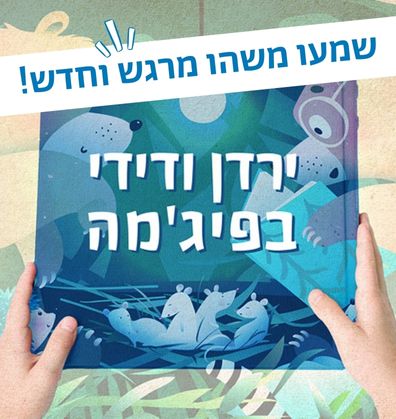טֶבַע וּסְבִיבָה
קיימות
לשתול? לנטוע? לטפח אתר? לנקות חוף? קיימות היא היכולת לשפר ולשמר את הסביבה, את משאבי הטבע ואת ערכי הטבע כך שיהיה אפשר ליהנות מקיומם לאורך זמן ובדורות הבאים. קריאת סיפורים על קיימות וקיום פעילויות בנושאים סביבתיים, מסייעים לפתח גישה חיובית לסביבה ולהקנות הרגלי חיים ירוקים כבר בגילים צעירים.
סְּפָרִים
Book-Related Family Activities
Discussion – What does it mean to be considerate?
“It’s important to be considerate toward our environment” – What does being considerate mean? How can we be more considerate of one another at home, within our own family? And how can we care for our environment? You could discuss these questions with your child, and come up with suggestions on how to be more considerate of other people as well as the environment.
An invitation for an observation
You’re most invited to embark on an observation on a piece of nature in your immediate surroundings: A park near your home, or field, or yard, or even a planter on your balcony. What would you discover if you sat down quietly and watched? You may want to bring a magnifying glass along with you.
Learning from one another
What can adults learn from children? Lots of things! How to play their favorite game, engage in arts & crafts, find out more about a subject they learned about in preschool, or just share an interesting thought. And what can children learn from adults? To find out what we can learn from one another, all we have to do is sit together, and pay attention.
Catching colors
The sky is blue, the earth is brown, and vegetation is green. You may enjoy going outdoors and “catching colors”: Take turns to say a color, while the other players quickly find an item around them that is the same color, and point to it.
Proposed Family Activities:
- How about packing this book along with some refreshments and a blanket, finding a beloved tree in nature, and reading the story there together. Afterwards, you may enjoy collecting pine cones, tree bark, leaves, and more. When you return home, you can use them to make a piece of artwork together.
- You may want to snuggle up and look at the magnificent illustrations closely. Can your child identify some familiar trees by their illustration?
- After you finish reading the story, you may want to ask your child what they think Giora will do now, and what will happen to the trees. Perhaps you would enjoy writing up a creative follow-up to the story told, and illustrating it.
- Baobab, loquat, Tamarisk, Pecan… Giora knows every tree by name. what kinds of trees grow near your home? How can you identify them? How can you tell them apart? You may want to take go tree-spotting together, learn about the trees you see, and make an illustrated tree guide together.
- How about taking a walk near your home? Are there any open spaces or dilapidated courtyards nearby? Perhaps you and some friends could clean them up, and make them look nicer. You could even plant a community garden with your neighbors.
- Do you know any other stories or poems about trees (like Zuta and the Apple Tree by Orit Raz, What’s it like to be a Tree? By Datia Ben Dor, The Abba Tree by Devora Busheri, What Does it Take by Gianni Rodari)? You may want to look for them at home or in the library, and read them together.
This is the last book your child will receive from PJ Library this year. We hope you have enjoyed reading, discussing, and doing the activities together. We wish you a summer full of wonderful experiences and story times. See you next year!
Family reading tips
Adrianus (Hadrian) was a Roman emperor from 117 to 138. The Roman empire thrived under his reign. Adrianus suppressed the Bar Kokhba revolt and enacted regulations against the Jewish people. In the Talmudic legends (Midrashim) he is described as a wise and well-educated emperor, but also as being cruel. He is often cited as the main cause of the destruction of Judea.
Basket full of gifts
Special gifts are passed through generations: a family story, a tasty recipe or a unique holiday tradition. What important gift did you receive from your parents, grandparents or other family members?
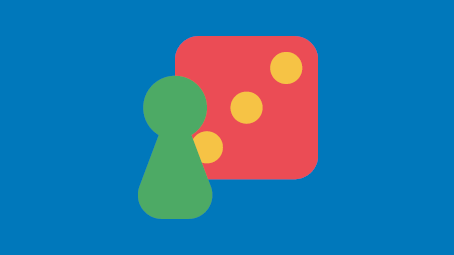
Past to future
Take a look around the house: What items can you find that were made in the past? Can you find things that were created recently which can be used by future generations? Maybe a new building being built, a playground, a school or a grove?

Make a family album
The old man in the story left figs for future generations, and we are left with the story. Why not create a family album with family photos and stories. You can add photos from trips or special occasions, and share stories of things you experienced.

Find more arts and craft projects, songs and other activities on Sifriyat Sifriyat Pijama Library’s Pinterest page.
Where is the Heart?
You may want to look at the illustrations in the book together. What grows on each tree? Has your child noticed that the story begins with a small heart on Hannan’s pocket, and ends in five heart-shaped trees? Leaf through the pages and try to find the bird on each page.
A Bell and Song
You may enjoy reading the story several times. Your child may want to join in for the refrain: “דין דין דון בפעמון”. Once you have read the story through several times, your child may be familiar enough with the story to tell it using the illustrations.
The Five Sense Game
Perhaps you would like to play a fruit guessing game together. Cover your child’s eyes with a kerchief, and hand them some fruit. Can they recognize it? You may want to guide them to use their sense of touch and smell. They can also bite the fruit, and try to identify it through their sense of taste.
One Book Leads to Another
Do you know any other books written and illustrated by Rinat Hoffer (such as Ayelet Metayelet and Purple Monster)? You may want to look for them at home or the library, and read them together.
The Trees around Us
Perhaps you would like to take a walk together, and look for trees growing in the area: are they bearing fruit like the trees planted by Hannan the Gardener?
A Surprise in the Avocado
Would you also like to grow a treasure? You may want to take an avocado pit, stich four toothpicks through it and place it in a jar, with the sharp point pointing upwards, and the wider section dipped in water. You could follow it as it sprouts: is your avocado pit growing into a tree?
Where's the Treasure?
You may enjoy going on a treasure hunt. You could prepare notes with clues, and lead your child closer to the hidden treasure with each note.
Fruit Salad
How about making fruit salad? You may want to take a tangerine, orange, apples, dates, and other fruit, and make a healthy, yummy fruit salad together.
Family Activities
- Spend some time together examining Gad Shkedi’s illustrations. Notice the many different animals featured in the illustrations, alongside the trees. Compare the various trees: how many trees are mentioned in the story? Which are fruit trees, and which don’t bear any fruit? Did you notice that the end of the story is toldusing only illustrations? Tell the story in your own words.
- Do you perhaps have a favorite tree in your own yard, or near your home? Does your favorite tree have a “story”? You could take your children on a “tree tour” in your neighborhood. Can you spot any of the trees that appear in the story? Can you identify other types of trees? Compare the various trees you find: what is the benefit of each kind? Which trees are decorative, and which bear fruit? How do we know if a tree is young or old? You might pack this book, a blanket, and a light picnic, and read the story together in some lovely spot outdoors, under a tree. Then (if local environmental regulations allow) you could gather fallen pine-cones, bits of tree bark, leaves, etc., and use them to create a work of art when you get back home.
- In the story, Hannah wants to climb a tree “now,” and her father wants to rest “now.” For many families, this situation is all too familiar. How do you respond when there are conflicting desires in your family? You might discuss things we want immediately vs. things for which we must wait, along with the need to consider others’ wishes and to be patient.
- Trees provide us with an abundance of good things. You could go from room to room in your home and try to identify everything that comes from trees, for example: furniture made out of varying kinds of wood, olive oil that we use in cooking, maple syrup from the sap of the maple tree, wine and raisins harvested from grape vines, and so on.
- Do you know any other stories about trees (for example: the traditional tale of “Honi the Circle-Maker and the Carob Tree,” featured below; the poem “The Tree Man” by Shlomit Cohen-Assif; “Mr. Mini and the Apple Tree” by Orit Raz, or “What Do We Need For…” by Gianni Rodari)? Look for these books at home or at the library, and read them together.
- In Jewish tradition, it is customary to plant a tree to mark important milestones in one’s life. How does your family celebrate or remember important occasions and people? Does your family plant trees to mark a birth and/or other major occasions in your lives?
- Various Jewish source texts compare humans to trees. Talk with your children about your family’s roots, about the” seeds” you are planting for the future, about the different branches of your family, and so on. You might also draw your own family tree, from the grandparents’ generation down to your children’s generation.
- Just like trees, we humans also need a firm foundation in order to grow and flourish. After reading the story, you might have a conversation with your children about the things that matter most to you —your values, deeds, traditions, and beliefs—that strengthen the “foundation” of your family’s tree and support your collective growth.
Have fun reading and discussing this book!
Family Activities:
- Look closely at the illustrations together with your child. Did you take note of the same things? Did you discover anything surprising or humorous in the pictures? You may ask your children if they recognize all the objects in the book, and explain those things that they do not know. Take a closer look: Some of the illustrations are made from photographs; others are created with torn pieces of paper or fabric. You can flip through the pages and look for all the things that are made of wood. Did you notice how the letters are made?
- Take note of the book’s cover. Did you notice the flower that is sprouting from the wooden table? Which came first, the flower or the table? As a way to emphasize nature’s cycle, try reading the book backwards, from end to beginning.
- Which trees grow near your home? You can go out together for a walk and collect twigs and special leaves. Back home, you can glue your treasures onto a clean piece of paper and create a picture.
- The blessing of the trees reminds us to stop and enjoy nature. You can talk about the plants and trees that you know – their names and their characteristics. Which trees do you find beautiful? Which trees produce fruit and which do not? You can discuss the many ways we benefit from different trees.
- Together with your children, you can make your own What Does It Take… book. Invite your children to cut or rip pictures from old magazines. Then glue the torn pictures onto pieces of white paper, punch holes in the side of the pages and tie them together with a shoestring. Does your book have pictures of flowers and trees as well?
- Do your children know the origins of the food they eat, the clothes they wear, their books and toys? It is important to encourage questions on the source and production process of everyday objects. Even when we do not have all the answers, the act of wondering about this expands the children’s knowledge base and increases everyone’s appreciation and gratitude for our world.
- You can play a family game of “What is made of…?” One person thinks of an object in the home (furniture, kitchenware, toys…) and announces, “I’m thinking of something that’s made of…”, and the others try to guess the object. Be sure to take turns so everyone has a chance to ask the questions and provide the answers.
Proposed Family Activities
- Your child might enjoy telling you the story according to the series of illustrations. They might want to pick a certain character, and look for it in each illustration throughout the book: Who did they choose? Why that character? What does it like to do in the field?
- You may want to share stories about the changes you have undergone since childhood with your child. Has a childhood puddle turned into a highway? What happened to the field you used to play in as children? Perhaps you would like to look at old photographs together, and compare them to today.
- Is your neighborhood, like the one in the story, expanding and undergoing changes? You may want to visit a construction site together, peek over the fence, and look for tractors and cranes. If tall buildings are being built there, you could try counting the stories together. Or perhaps you’d like to imagine the flowers the new tenants will plant in their gardens, and who they would be. Maybe new friends will move in there?
- Have you ever left a familiar, well-loved place behind? Did the change make you happy? Try to remember and share with your child: How did you feel before the change, and how did you feel once you had gotten used to it?
- The book describes the flowers and greenery typical for each season. You could take a walk with your child, observe nature, and look for flowers. Which flowers have you come across? What color are they? Do you know names of wild flowers? You could also take a picture of yourself with pretty flowers. Have you found a dandelion? Try blowing on it. Have you managed to blow its white “hairs” off and see them fall to the ground like snow?

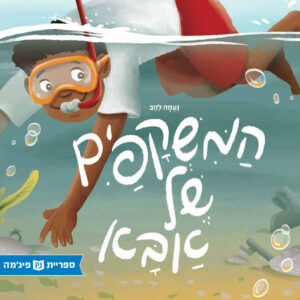 Aba’s Glasses
Aba’s Glasses 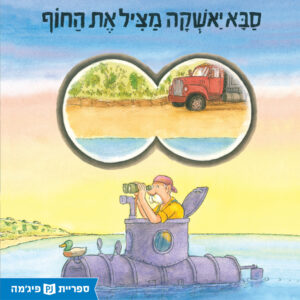 Saba Yashka Saves the Beach
Saba Yashka Saves the Beach 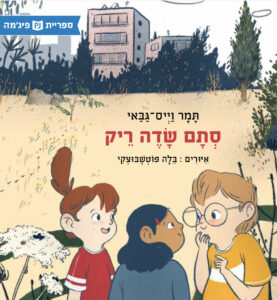 Just an Empty Field
Just an Empty Field 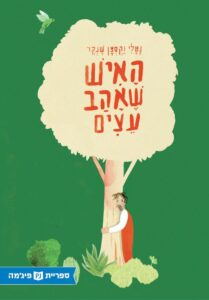 The Man who Loved Trees
The Man who Loved Trees 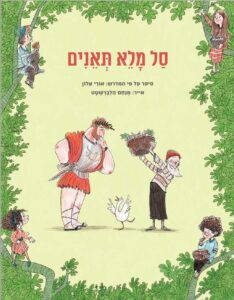 A Basket Full of Figs
A Basket Full of Figs 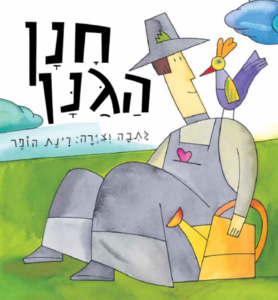 Hannan the Gardener
Hannan the Gardener 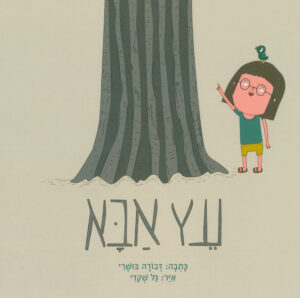 The Daddy Tree
The Daddy Tree 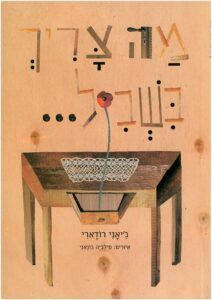 What Does It Take?
What Does It Take? 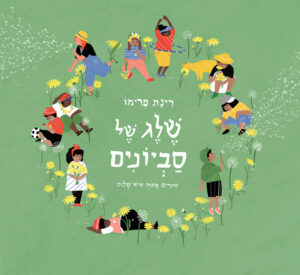 Snow of Dandelions
Snow of Dandelions 




